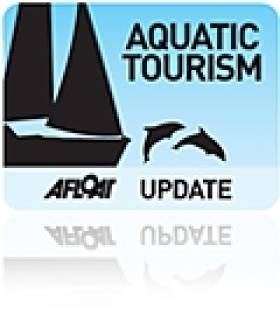Displaying items by tag: Co Sligo
'One Epic Day of Huge Surf' Caught On Film
#SURFING - A new short film tells the story of "one epic day of huge surf" at Mullaghmore Head, as Surfer Today reports.
The Northcore film 'Fathoms Left to Fall' follows some of the world's top big wave surfers as they converged on Co Sligo to take advantage of the swell, prompted by the extreme weather system known as the 'Viking storm'.
Among the Irish riders featured is 24-year-old Ollie O'Flaherty, who has been nominated for the 'biggest wave' prize in the 2012 Billabong XXL Big Wave Awards for his monster ride at Mullaghmore.
Also nominated for his outstanding effort at the Sligo surf mecca is Andrew Cotton, a Devon native who's no stranger to Ireland's big rollers.
Irish Surfer Needs Funds to Attend Big Wave Awards
#SURFING - A young surfer from Lahinch in Co Clare is in the running for the 'biggest wave' prize in the 2012 Billabong XXL contest for his monster ride at Mullaghmore Head, The Irish Times reports.
Ollie O'Flaherty, 24, is nominated along with Devon's Andrew Cotton for the massive surf they caught off Co Sligo on 8 March last.
It was the first visit to the world-class big wave spot by O'Flaherty, a science student at NUI Galway who is a veteran of the Co Clare scene.
As previously reported on Afloat.ie, it was Cotton who tackled the biggest wave on that day - a giant 50-footer - as some of the world's top surfers took advantage of the Viking swell.
Also nominated for the $50,000 (€38,280) prize is Irish-American surfer Garrett McNamara, who last year rode what is being called the biggest wave ever surfed in the world, a 90-foot goliath off Nazaré in Portugal.
According to the Irish Independent, O'Flaherty has put out a call for sponsorship so he can attend the awards ceremony next month.
"It's a massive honor to be able to represent Ireland," he said, but added that he is "pretty much on the breadline from what I'm doing".
Should he win, the Lahinch native said he intends to "put every cent back into surfing" and replace his seven broken boards.
The winners will be announced at the Billabong XXL Big Wave Awards in Anaheim, California on 4 May.
No Tow-In Surf Session for 2012
#SURFING - The second Billabong Tow-In Surf Session will not sadly run this year, following the end of the four-month waiting period yesterday.
Organisers decided to postpone the invitation-only event till next winter after conditions off Mullaghmore Head in Co Sligo failed to reach the minimum height requirement, as Magicseaweed reports.
“We’ve had a few swells that have come close,” said contest organiser Paul O’Kane of the Irish Surf Rescue Club. “However we set the standard incredibly high with the first event and were determined to only hold the event if the conditions were as good as that, if not better.”
Magicseaweed’s Ben Freeston concurred, saying that “the conditions needed for Mullaghmore to show it’s real face are so specific you might only see them a handful of times in the best years.
“This year we have had four or five swells that were big enough to be interesting, but not quite competition standard.”
The inaugural session was organised in an effort to dispel the myth that tow-in surfing, where surfers are towed by jetski to bigger offshore waves, is an irresponsible activity.
Last year's contest was also immortalised in an upcoming documentary from Mully Productions.
Whale Carcass Battered by Strong Sea Gales in Sligo
#MARINE WILDLIFE - The Irish Independent reports on the carcass of a whale that was strewn on a beach in Co Sligo after it was swept into rocks by Monday's gale-force winds.
The 13-metre fin whale had been seen recently on a number of occasions in Lough Hyne, a saltwater lake near Baltimore in Co Cork.
On Monday it was spotted at Raughley in the north of Sligo, where it was found beached by Jimmy and Viera Stupakova after the treacherous conditions of the early part of this week.
The find marks the fifth recorded stranding of the species in Irish waters, and the first validated record of a fin whale in Co Sligo, according to OutdoorCommunity.ie.
It is not yet clear how the juvenile met its end, though initial investigations point to the whale not being long dead.
The Irish Independent has more on the story, including video, HERE.
Ireland Among FT's 'Hottest Emerging Surf Spots'
The Financial Times has highlighted Ireland as one of the world's top emerging surfing destinations.
"The quality of Irish surf has been recognised for many years, writes adventure journalist Alf Alderson, "but it’s only recently that it has really taken off as a top destination for everyone from beginner to big wave expert."
Bundoran in Co Sligo gets the biggest props among the west coast's surfing hotspots, boasting a range of surf for everyone from beginners to expert waveriders.
But Ireland's largest waves at Mullaghmore Point also get their due - with its 50 foot swells putting it in league with the best in the world.
The Financial Times has more on the story HERE.
Surfers Take On Big Waves in Sligo
More than 20 of Ireland's and Europe's top surfers took on the monster waves at Sligo’s Mullaghmore Head at the weekend in Ireland's first ever 'big wave' surf contest.
The Tow-in Surf Session was organised by the Irish Surf Rescue Club in part to dispel the myth that tow-in surfing - where surfers are towed by jetski to bigger offshore waves - is an irresponsible activity.
Club president Paul O’Kane told The Irish Times: “Our surf riders and personal watercraft operators are all very safety conscious, highly trained, and contests like this can help to further develop skill sets.”
Eric Ribiere and Benjamin Sanchis from France took top place in the open category in a contest that rewarded skill and commitment on the biggest waves. Peter Conroy and Gyln Ovens came first in the Irish division, follwed closely by Al Mennie and Andrew Cotton.
Awards went to professional boarder Gabe Davies for best wave, Al Mennie for best barrel and Richie Fitzgerald for heaviest wipeout.
Easkey Britton also held her own as the only female competitor on the day, catching a solid 20-foot wave.
Click HERE for more video of the contest's big wave surfing action.
New Marina Centre for Ballycastle
Work has begun on a new visitor services building at Ballycastle harbour as part of a £7.4 million (€8.6 million) marine tourism project for the nothern part of Ireland and western Scotland.
Moyle District Council is one of 20 partners involved in the Sail West Initiative to develop boating, angling and marine tourism related infrastructure along the Northern Ireland coast north of Belfast Lough, Counties Sligo and Donegal, and a large part of Scotland's west coast.
The plan will see the demolition of the existing bungalow at the harbour, to be replaced with a new state-of-the-art marina building and harbourmaster's office with shower, kitchen and laundry facilities.
The council will also take part in an extensive marketing campaign along with the other Sail West partners to promote the region as an important sailing destination for sea-faring tourists.
The Ballymoney Times has more on the story HERE.



































































